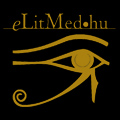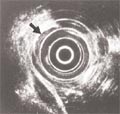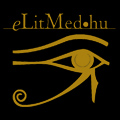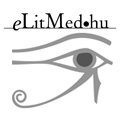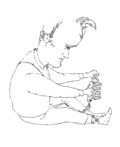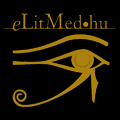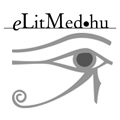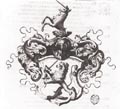The eLitMed.hu medical portal uses computer cookies for convenient operation. Detailed information can be found in the Cookie-policy.
Lege Artis Medicinae - 2001;11(06-07)
Content
[Current therapy of Hodgkin’s disease]
[Hodgkin’s disease is a clonal B-cell disease. The exact etiology of the disease has not yet been identified, research data showing the crucial role of the Epstein-Barr virus. The Hodgkin’s disease is curable in 70-80 % of the cases. In the early stage of the disease, the treatment of choice should be the combined modality therapy. The required number of cycles of combined chemotherapy, the dose and the field extension of radiotherapy are all subjects of recent clinical trials. In the advanced stage of Hodgkin’s disease more (6- 8) cycles of combined chemotherapy and, if necessary, radiotherapy of the affected field is the treatment of choice. In advanced Hodgkin’s disease with unfavourable prognosis, the role of higher dose-intensity and the combination of more potent chemotherapeutic agents are evaluated in clinical trials, with special consideration to the danger of late toxicity (BEACOPP, Stanford V protocol). In the treatment of early (within 1 year) chemosensitive relapses of Hodgkin’s disease, high-dose chemotherapy with autologous peripheral stem cell transplantation has improved therapeutic results. Current results of advanced cases with unfavourable prognosis, of primary progressive and resistant disease, relapsing Hodgkin’s disease and the treatment of elderly patients are yet unsatisfactory. The main trends of recent research are: development of new potent chemotherapeutic agents, application of allogeneous "mini" transplantation (graft versus Hodgkin’s disease effect) and the therapeutic use of mono or bispecific monoclonal antibodies. It is desirable, that primary, secondary and further treatments of Hodgkin’s disease are performed in specific hematological or oncological centers where necessary experience of complex treatment is available, as well as the application of aggressive treatment methods, modern radiotherapy and also the facilities for handling unwanted complications.]
[Current diagnostics and treatment of adolescent hypertension]
[As the prevalence of hypertension in young people aged 14-18 is reported to be 1-1.5%, regular blood pressure measurement is proposed by the international committees in the adolescence, at least once a year. To establish the diagnosis of hypertension, repeated blood pressure measurements and sex-, age-, heightand weigt-based nomograms are needed. If casual blood pressures are consequently elevated, an ABPM measurement may provide additional informations, e.g. about white coat hypertension, daytime and nighttime blood pressure patterns and target organ damage. Thus, in such cases ABPM measurement is proposed to become the part of the routine examination. Following the diagnosis of hypertension in the adolescent, a further important step is to clarify the causes of the disease. In the majority of adolescent cases, essential hypertension is the diagnosis, but secondary (especially renal causes) are more frequent than in adulthood. First line treatment of adolescent hypertension is definitely non-pharmacologic. Pharmacologic treatment may be indicated if blood pressure is significantly increased (diastolic blood pressure, especially), if secondary hypertension is diagnosed or target-organ damage is present, or there are consistent complains related to the increased blood pressure. Treatment can be initiated with any of the antihypertensive drugs used in adults, but most frequently the use of beta-blockers and ACEinhibitors is recommended.]
[Endoscopic diagnosis of oesophageal intramural metastasis from an adenocarcinoma of the gastrooesophageal junction]
[INTRODUCTION - Authors present six cases of intramural oesophageal metastases of adenocarcinomas located in the gastro-oesophageal junction. The tumours and metastases were diagnosed by endoscopic examinations. PATIENTS AND METHODS - Between 01. 01. 1994. and 31. 12. 2000. a total number of 143 patients were examined with the diagnosis of adenocarcinoma of the gastro-oesophageal junction. In six patients (4,19 %), intramural oesophageal metastases were verified. In each case the diagnosis was confirmed by histological examination. TNM stage of the tumours was assessed considering the results of endoscopic ultrasound examination, the findings at initial operation and the pathological data in all cases, where resection was performed. The tumours were localized according to Siewert- Stein’s classification. RESULTS - In six patients who had adenocarcinoma of the gastro-oesophageal junction, the diagnosis of intramural oesophageal metastases was confirmed. The histological structure of the primaer tumours and metastases were the same. Metastases were detected by endoscopic ultrasound examination in three cases of the four examined patients as submucosal masses. All of the cardiac tumours proved to be well advanced: four of them classified as T4N1 by endoscopic ultrasound. Intramural metastases were diagnosed in each Siewert-Stein subgroups. CONCLUSION - Endoscopic examination is of crucial importance in the diagnosis of adenocarcinomas of the gastro-oesophageal junction and in their intramural metastases as well. Beside the endoscopic identification the primary tumour, the thorough examination of the proximal part of the oesophagus seems to be of great importance. These metastatic cancers appeared in the advanced stage of the disease. Endoscopic ultrasound examination is of great help in these cases to identify whether the mass causing oesophageal impression is outside of the wall of the organ, or in which layer it is localized. Endoscopic ultrasound examination also gives the possibility for preoperative assessment of the TNM stage of the disease.]
[Platelet aggregation inhibitors in the prevention of coronary coronary artery disease. „Handle with care!"]
[Platelets play pivotal role in the pathophysiology of unstable angina, acute myocardial infarction and in complications following percutaneous coronary intervention. Three classes of platelet-inhibiting drugs, aspirin, thienopyridines and platelet glycoprotein IIb/IIIa inhibitors are now commonly used for the prevention and treatment of the disorders of coronary artery thrombosis. For the last several decades, aspirin has been the sole option for antiplatelet therapy in the treatment and prevention of the manifestations of cardiovascular disease. However, a wider selection of antiplatelet agents, including the thienopyridines (ticlopidine and clopidogrel) and the platelet glycoprotein IIb/IIIa receptor antagonists are available today. This review summarizes these drugs and scientific data that have led to their use in primary and secundary prevention, unstable angina, myocardial infarction and percutaneous coronary intervention.]
[Primary haemostasis in atherothrombotic processes]
[It is now generally accepted, that the majority (>90%) of acute coronary and carotid syndromes are caused by thrombosis secondary to atheromatous plaque disruption, and approximately 75% of stroke cases are also of thrombotic origin. The prothrombotic changes in blood coagulation and in the primary haemostatic system may contribute substantially to the risk of occlusive arterial thrombotic events. The imbalance in the endothelium-platelet interaction seems to play crucial role in vessel wall response to injuries. Careful and complex analysis of platelet and clotting alterations may result in better understanding of arterial thrombotic processes and also in greater success of primary and secondary prevention by accelerating the development of better antithrombotic drugs.]
1.
Clinical Neuroscience
Is there any difference in mortality rates of atrial fibrillation detected before or after ischemic stroke?2.
Clinical Neuroscience
Factors influencing the level of stigma in Parkinson’s disease in western Turkey3.
Clinical Neuroscience
Neuropathic pain and mood disorders in earthquake survivors with peripheral nerve injuries4.
Journal of Nursing Theory and Practice
[Correlations of Sarcopenia, Frailty, Falls and Social Isolation – A Literature Review in the Light of Swedish Statistics]5.
Clinical Neuroscience
[Comparison of pain intensity measurements among patients with low-back pain]1.
Clinical Neuroscience Proceedings
[A Magyar Stroke Társaság XVIII. Kongresszusa és a Magyar Neuroszonológiai Társaság XV. Konferenciája. Absztraktfüzet]2.
3.
Journal of Nursing Theory and Practice
[A selection of the entries submitted to the literary contest "Honorable mission: the joys and challenges of our profession" ]4.
Journal of Nursing Theory and Practice
[End of Life and Palliative Care of Newborns in the Nursing Context]5.
Journal of Nursing Theory and Practice
[Aspects of Occupational Health Nursing for Incurable Patients ]




